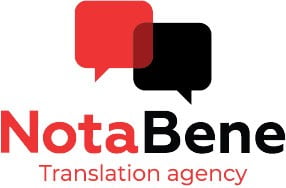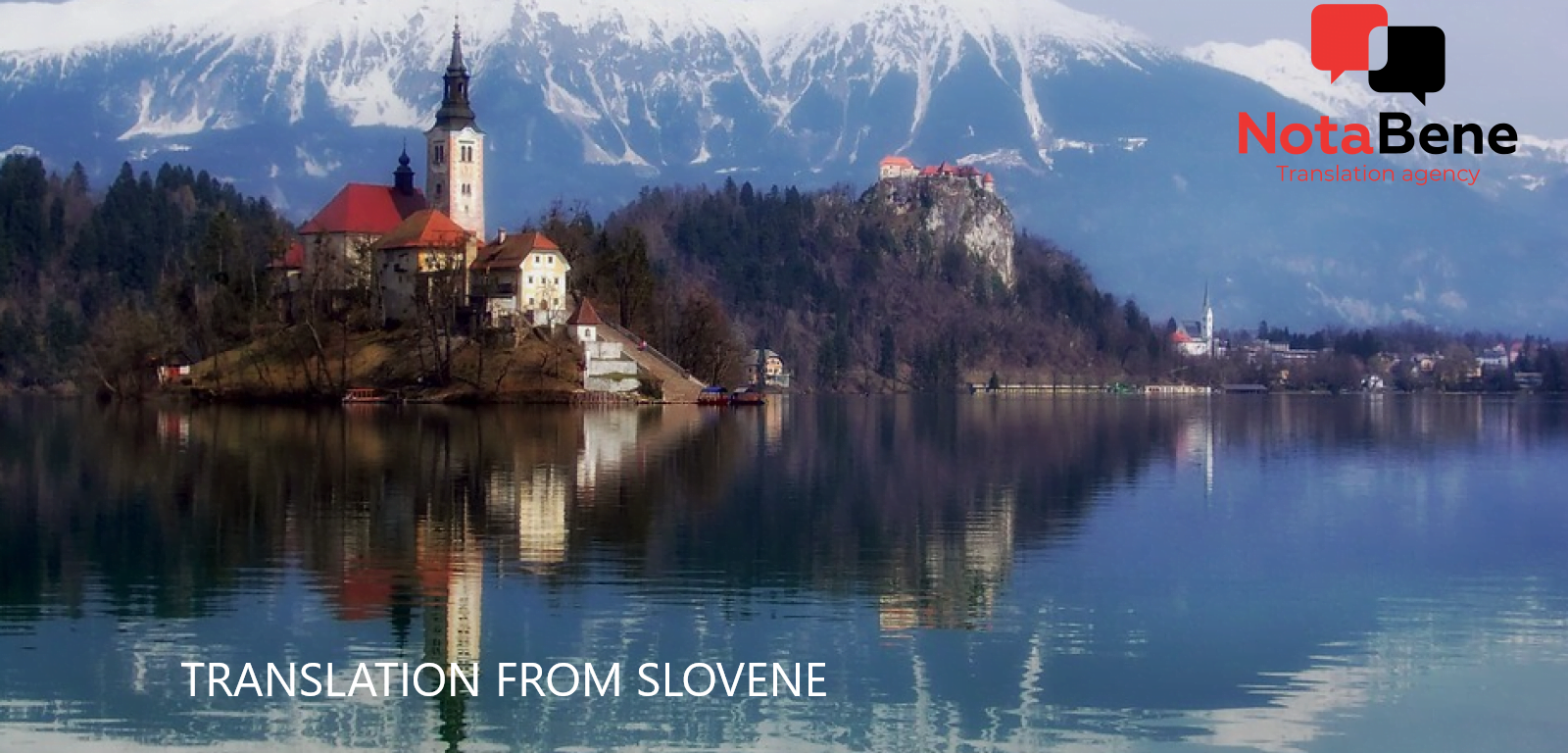Order translation from Slovene or into Slovene at NotaBene Agency in Warsaw and Gdansk!
NotaBene Translation Agency is an experienced supplier of translation from Slovene into Polish and vice versa for any documents or texts.
What types of texts does NotaBene Translation Agency work with?
– Technical translation from Slovene — we translate any texts in electronics, aviation and shipbuilding, agriculture, industry, oil and chemistry, etc. For this purpose, we pick translators who understand the specific nature of a given industry.
– IT translation from Slovene for the localization of applications, games, software and websites.
– Medical translation from Slovene — books, manuals, articles in specialized printed and online publications, clinical records, correspondence with medical institutions, transcriptions and translations of test results, instructions for medicines and many other types of texts. This kind of translation requires flawless knowledge of medical terminology and focus on detail to rule out ambiguity, because the result can affect the health or life of many people.
– Legal translation from Slovene: statutes, registration deeds, articles of incorporation, contracts, powers of attorney, court records and many other similar documents.
– Financial translation from Slovene includes the translation of balance sheets, tax returns, payment invoices, waybills, tender documents, etc.
– Literary or fiction translation is the translation of works of fiction, marketing and advertising materials. Unlike the previous types of translation, in this case there is more room for a translator’s creativity, because there is no need for “word for word” translation. The most important thing is that the translated material produces the same impact as the original, while an excellent translation may even make it better.
Please note that the translation mentioned is certified by an agency seal only. If you need sworn translation, kindly notify your manager in advance. Sworn translation is possible only for certain languages.
How to have a translation from Slovene into English, Polish, Russian, Belarusian or Ukrainian?
First of all, you need to order it. To do so, send your source text and specify your requirements for the translation from Slovene. A customer service specialist at the Nota Bene Translation Agency will prepare a ToR based on the specific features of the order. If the project involves more than one job, a unique glossary is created to ensure the consistency and proper use of terminology.
An entire team of several professionals normally works on a job: a translator, proofreader, editor, quality controller, layout designer and manager who will be available during working hours. In order to rule out human errors, the translation agency uses modern services to check punctuation, idioms, numerical expressions, and formulas. The material is also reviewed by the chief editor.
Confidentiality of translated data is ensured by a special NDA, whenever a customer wishes to have one. Documents can be delivered to any country.
We very rarely apply additional fees for “urgency” or “specialized subjects”, so you can be sure that the price will not rise when the project is delivered. It is true that in rare cases, such as “we need to have it yesterday” instances, and when a customer is willing to pay a higher rate for the team to work outside normal working hours, at night or on weekends, the fee might be increased, but this is always negotiated with the customer in advance.
The Slovene language
The Slovene language (slovenski jezik, slovenščina) belongs to the western branch of the South Slavic languages. It is spoken by approximately 2 million speakers, most of whom live in Slovenia. The language is considered one of the most archaic languages. Along with Lusatian (otherwise known as Sorbian), Slovene is one of the only two literary Slavic languages to retain a dual numeral. The name of the language, both Slovene and Slovak, means “Slavonic” (cf. from Old Slavonic “словѣньскъ”).
The earliest written evidence of the formation of the Slovenian dialect is the Freising manuscripts, which were written between 972 and 1093 in the valley of the river Moell in Carinthia. It is the oldest surviving example of Slovene written language in Slovenia, written in the Latin alphabet (Carolingian minuscule). “The Brižin passages” are one of the oldest monuments not only of the Slovenian language, but of the Slavonic written language at all.
The Slovene literary language began to form in the 16th century, in the works of reformers such as Primož Trubar (1508-1586), Adam Bohoric (1520-1598) and Juri Dalmatin (1547-1589). The territories of what is now Slovenia once belonged to the Holy Roman Empire and later the Austrian Empire and the Austro-Hungarian Empire. In the latter, German was the language of the elite, while Slovene was spoken by ordinary people.
There are many Germanic forms in modern Slovene, which is partly due to the impact German has had on Slovene in the course of historic events. Many eminent Slovene scholars were writing in other languages before 1920, chiefly in German, which was the lingua franca at the time.
During the 18th century, the foundations of the literary language began to shift from the Dolene dialects to the north, towards Ljubljana, which was situated in a transition zone between the two dialect groups: Dolene and Gorenj. According to linguists, Dolenj consonantism and Gorenj vocalism can be observed in modern Slovenian.
Illyrianism and pan-Slavism have resulted in a number of loan words in Slovene from the Serbian, Czech and Russian languages.
Slovene literary language formation was completed in the 1850s. Catholic bishop Antonije Martin Slomšek had a major influence on the formation and development of literary Slovenian.
One of the theories about the origin of Slovenes is the Venetian Theory (venetska teorija), which is based on the denial of Slavonic settlement of the Eastern Alps in the 6th century and the assumption that the Venetians (proto-Slovenians) have inhabited the region since ancient times. This theory is seen as an alternative explanation for Slovenian ethnogenesis, but is not recognised officially.
Slovene has a dual numeral, which the Slovene people are rally proud of! In Russian only the singular and the plural remain, but in Slovene you can often hear: “The two of us (Mi dva sva)
We have been in business for over 20 years and during that time we have learned to work well. Trust us with your project and get a great result at a reasonable price!








